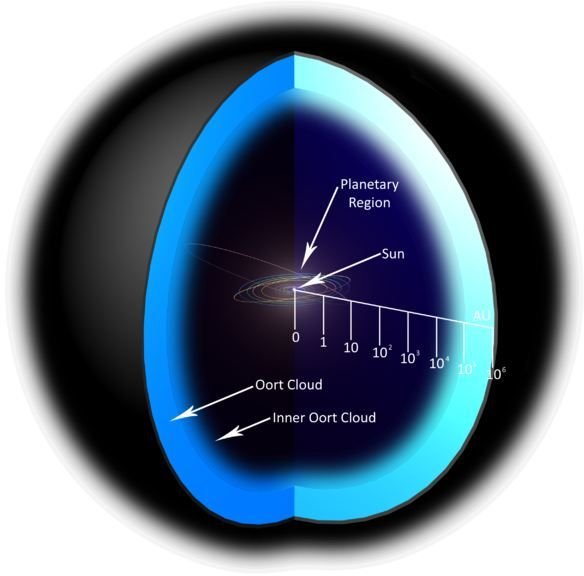Facts About The Oort Cloud - Home Of The Comets
Jan Oort and the Oort Cloud
Jan Oort, a Dutch astronomer, predicted in 1950 that a cloud of astronomical objects existed far outside of the solar system and was the basis of comets. Today, the Oort cloud is believed to be a vast reservoir of ice dwarfs and it identifies the maximum outer limit of the solar system, and the outer limit of the Sun’s gravitational influence.
It is believed to be the source of comets in the solar system, which arrive from all directions; indeed, they come from as far away as 100,000 AU. An AU, or Astronomical Unit, is a measurement of the distance from Earth to the Sun, 1 AU is equal to 93 million miles (15 million km). Pluto, by comparison, is 39 AU’s from the sun. That is Pluto is 39 times more distant from the Sun than Earth. The cloud is spherical shaped and not a disk, which accounts for the number of comets that come from all directions.
Basic Facts of the Oort Cloud
- The radius size is 30 trillion kilometers from the Sun**,** 18 trillion miles.
- The doughnut-shaped Inner Oort Cloud reaches between 2,000 to 20,000 AU.(1.86 billion miles to 1.860 trillion miles )
- The spherical Outer Oort Cloud reaches between 20,000 to 50,000 AU,(1.860 to 4.650 trillion miles )
- The combined mass of the cloud is 3 × 1025 kilograms, or roughly five times the mass of the Earth.
Picture Credit: Andrew Zachary Colvin: https://en.wikipedia.org/wiki/User:Azcolvin429
Objects with Orbits in the Oort Cloud:
There is still much that needs to be discovered about the objects in the Oort cloud, but in recent years four objects are considered to be candidates that reside or have orbital periods in the Oort cloud.
Object: Equitorial Diameter; Perihelion (AU); Apehelion (AU); Year Discovered
-
<strong>Sedna</strong>: 180 - 1800 km; 76.1 AU; 892 AU; 2003 Second most reddish planet in the solar system after Mars. Is is a dwarf planet candidate
-
2000 Cr105: ~250 km; 44.3 AU; 397 AU; 2000 A comet 400 km in size and with an orbit of 3175 years; Could be Planet X.
-
2006 SQ372: 50-100 km; 24.17 AU; 2005.38 AU; 2006. Just over 2 billion miles from Earth its orbit will extend 150 billion miles.
-
2008 KV42: 58.9 km; 20.217 AU; 71.76 AU; 2008 “Drac” for Dracula, a TransNeptunian Object and orbits backwards around the sun.
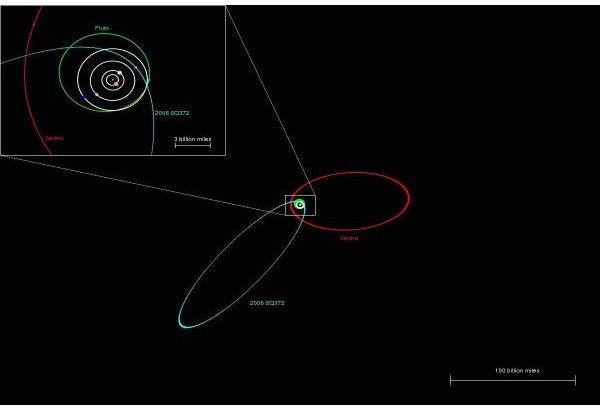

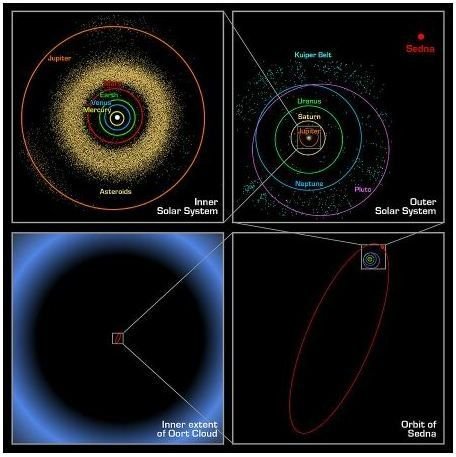

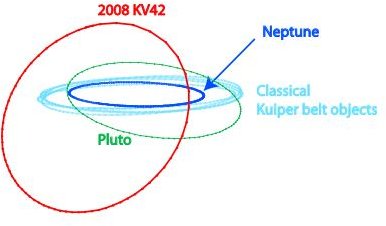
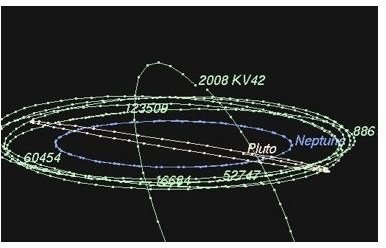
Credit: Nathan A. Kaib, SDSS
Origin of the Oort Cloud hypothesis
In 1932, the Estonian astronomer, Ernst Opik, put forth a hypothesis about comet formation, that they originated in an orbiting cloud beyond the solar system. In 1950, the Dutch astronomer Jan Oort, independently put forth the idea that unless there was someway to create comets outside of the solar system, there would be no way for astronomical objects to coalesce into large astronomical bodies that could enter the solar system. The solar system had no mechanism to create the comets internally, so there must be some external mechanism.
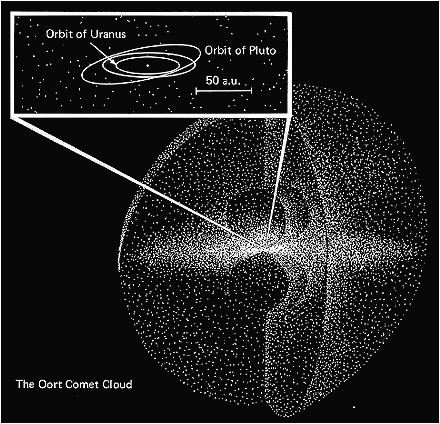
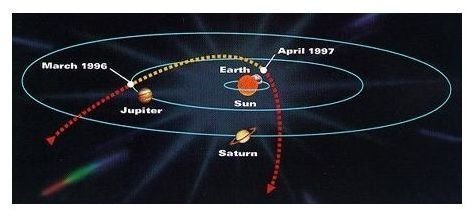
Content of the Oort Cloud
The vast majority of Oort Cloud objects consist of various chemical ices, made up of water, methane, ethane, carbon monoxide and hydrogen cyanide. The cloud may also be home to rocky objects.
Similar content in Jupiter orbital comets and the Oort Cloud: When chemical analysis was done of the carbon and nitrogen isotope ratios in both the Oort Cloud and Jupiter-family comets, little difference between the two was found, in spite of their vast separate regions of origin.
Interersting Facts About the Oort Cloud
-
Jan Oort identified comet orbital distribution using only 19 well-measured orbits. From this analysis, however, he successfully identifed that these comets came from the Oort cloud.
-
The outer Oort cloud is believed to contain several trillion individual comet nuclei not much larger than 1.3 km. Also they are tens of millions of miles apart.
-
The outer cloud is only weakly bound to the Sun and supplies the long period comets, like the Halley-type to the inner part of the Solar System.
-
The inner Oort cloud is also known as the Hills cloud first proposed in 1980.
-
The Oort Cloud is so large that the outer portion places the boundary of our Solar System at nearly a quarter of the distance to Proxima Centauri, the star nearest to the Sun.
Sources
https://www.solarviews.com/eng/oort.htm
https://www.daviddarling.info/encyclopedia/O/OortCloud.html
This post is part of the series: Special Astronomy Objects
In this series we look at several different astronomical objects and their composition. This will show the magnitude of size and the diversity of objects in the visible universe.
